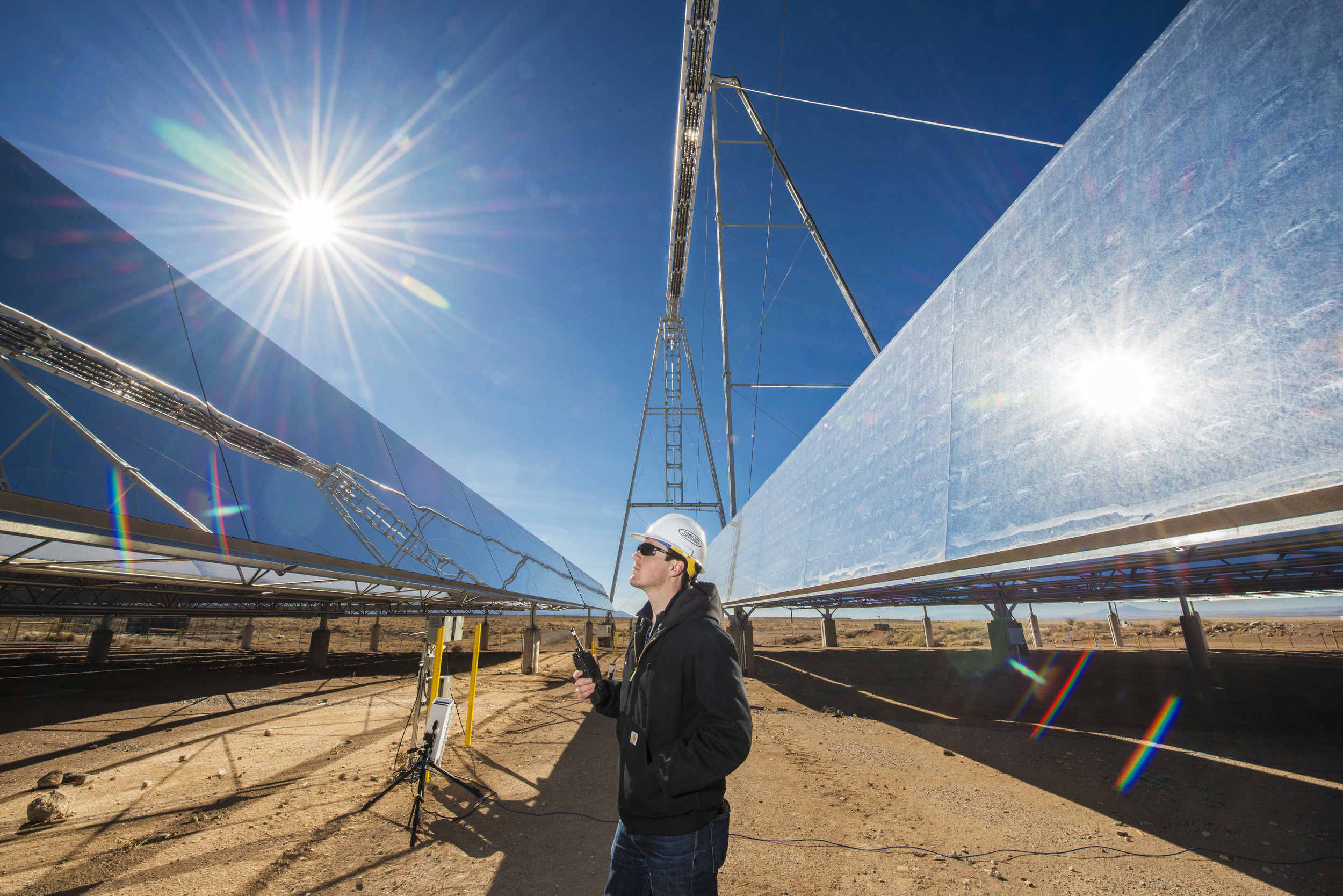Doped Silicon & Hopping Electrons
/Ready to soak up some more solar energy? Last week we looked at Sandia Labs’ 8-acre heliostat field, in which hundreds of huge mirrors bounce the desert light onto a single tower. Their cumulative reflected light adds up to 400 suns’ worth of radiation, enough to produce 1 megawatt of electricity via an industrial thermal generator. Whew!
Today we’re shifting scales from the massive to the subatomic: instead of measuring energy in suns, we’ll measure it in photons. This is the level on which photovoltaic cells operate, one photon at a time energizing one electron at a time.
Here’s how it works. A steady stream of mass-less quantum particles of light pours down on the panels. Some of these photons are lost when they scatter on the surface and reflect away from it, though this is minimized by an antireflective film atop highly transparent tempered glass. (If solar panels absorbed 100% of the photons that struck them, they’d be invisible to us, blacker than the blackest paint—a feat NASA is still striving to pull off.)
Those photons that do penetrate the panels’ surface enter a silicon wafer and, if they have enough energy (i.e. if the light is a high enough frequency), knock the silicon’s electrons loose from their places in the crystal lattice. Electrons on the move? That’s the makings of usable electricity, though we’re not there yet.
The key to generating a useful current lies in the silicon’s structure. Silicon is a semiconductor: under certain conditions it allows electrons to travel through it (like copper wiring), while under others it resists (like rubber insulators). That versatility makes it incredibly useful in complex electrical systems—no wonder it’s in virtually every integrated circuit operating our daily lives, from smartphones to computers to digital appliances.
In the case of photovoltaic cells, we want the electrons knocked loose by photons to be able to travel through the silicon, but not haphazardly. They’ll only constitute an electrical current if they form a coherent flow. To achieve this, the silicon is “doped,” meaning it’s deliberately infused with chemical impurities like phosphorus and boron. Depending on the dopant, the silicon takes on an electrical charge, either negative (n-type) or positive (p-type). Photovoltaic cells have thin layers of both n-type and p-type silicon, which creates a voltage across the p-n junction that forces electrons to jump from atom to atom in a single direction from positive to negative.
In other words, placing certain foreign atoms within silicon’s otherwise pure lattice creates a structured path along which our loose electrons can hop in just one direction—a subatomic one-way street through the wafer. And what’s a one-way flow of electrons but a direct current (DC)? That is, photon by photon, loose electron by loose electron, the cell absorbs sunlight and converts it to electricity. The current initiated in the silicon is channeled through a closed circuit where it can be fed into the grid or stored in batteries.
Combine solar cells into modules and arrays and you can absorb whole acres of solar energy, producing electricity from our most renewable resource. Each hour the sun supplies us with enough photons to power the global economy for a full year, and we expect it to keep shining for another five billion years, so there’s no shortage of light at our disposal. The real limits for solar power right now are the cost of producing high-quality panels and the upper efficiency they can achieve.
That’s the current focus of research by institutions like Albuquerque’s own Sandia Labs, whose Photovoltaic Systems Evaluation Laboratory (PSEL) collaborates with everyone from private companies to universities to the U.S. Department of Energy. With our clear blue skies and wide swaths of flat dry land, New Mexico is perfectly positioned to lead the world in solar technology development. Cheers to that!
This post was brought to you by the National Renewable Energy Laboratory, NASA Science News, and a whole lot of electricity-fueled clicking and typing.




